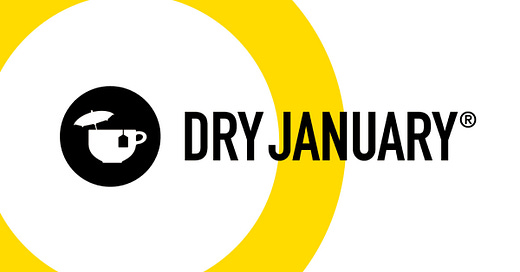What is Dry January?
Dry January began in 2012 as an initiative by Alcohol Change UK, a British charity, to “ditch the hangover, reduce the waistline, and save some serious money by giving up alcohol for 31 days.” Millions of people now take part in the challenge with more Americans taking notice each year. Since there was a spike in drinking during the coronavirus crisis, some people are more mindful now about exploring alternatives in January and the rest of the year. There are 123 calories in a 5-ounce serving of wine and 100 calories per ounce of most spirits -- another incentive for Dry January if you are cutting calories. Why January? New Year’s Day resolutions are being set with healthy goals at the top of the list.
NBC's The Today Show, December 30, 2021, quoted Dr. James C. Garbutt, adjunct professor of psychiatry, University of North Carolina: “The [Covid-19] crisis caused stress for nearly everyone and many folks have increased their alcohol consumption. Trying a period of sobriety such as Dry January can be very positive.”
What about the healthful benefits of drinking, especially red wine? These benefits are certainly there. The resveratrol and antioxidants are a health benefit of red wine. Please refer to my previous article: “Have a Healthy Wine: Bending Branch Winery, Comfort, Texas: An Interview with Dr. Bob Young, MD.”
Benefits of a Dry January
Some of the benefits of less alcohol have been reported:
*Increased energy
*Better sleep, non-interrupted REM sleep
*Lower calories, lose weight
*Feeling less irritable and anxious
*Fewer headaches
*Better skin hydration, increased hormones
*Improved Stress Management
*Improved relationships
*You get a mood boost
*Stronger Immune system
*Sunnier mornings with no hangover
*Save money
*Less IBS and gastrointestinal issues
How to Start/What About February?
*Rely on friends and family for support or create a Dry or “Dryish” January group of friends
*Empty existing open wine bottles
*Keep a journal about how you feel
*Create activities or take a class during cocktail hour
*Give yourself a break and don’t beat yourself up. Starting gradually works too.
*Just because it is February, you can still keep up the “dryish” habits like new activities
* See some “mocktail” and cocktail recipes below. Add more tea and water into your day for hydration.
*Go slow in February, and it may be surprising that you discover your favorite drinks taste different/better.
*Why not do a Dry May or June when you have new outdoor activities?
Substitute or Enhance Healthy Habits
If you feel you don’t want to fully abstain in January, you may do what I’m doing: a “dryish January” with some healthful substitutes during the weekdays. Adding additional activities to your workout routine can help. Change up your healthy habits with home-based BeachBody videos workouts, pickle-ball, or yoga. Most nutritionists say that replacing an evening cocktail with a good habit works. Wineries like Clif Family Winery, located in Napa Valley, are mixing up entertainment with exercise by incorporating cycling with wine tastings.
Below are some suggestions for non-alcoholic substitutes for Wine Wanderings Premium Subscribers. Cheers to a happy and healthy 2022.
Wine Wanderings Upcoming Newsletters:
Spain and G&T’s: What is the Story of their Fandom?
An Interview with Christian Oggenfuss, CEO Napa Wine Academy
Wine Wanderings Premium Subscribers: Fun and Healthy Non-Alcohol Drinks: See Below.
Keep reading with a 7-day free trial
Subscribe to Wine Wanderings to keep reading this post and get 7 days of free access to the full post archives.






